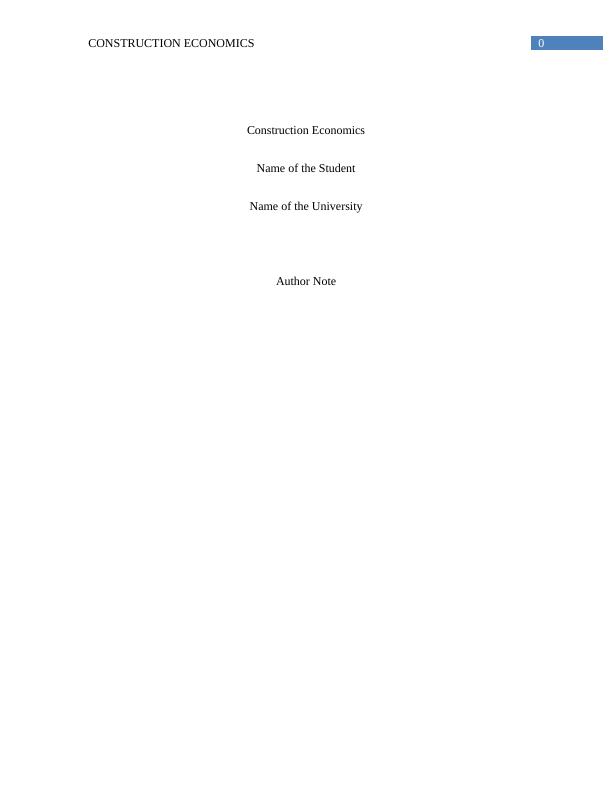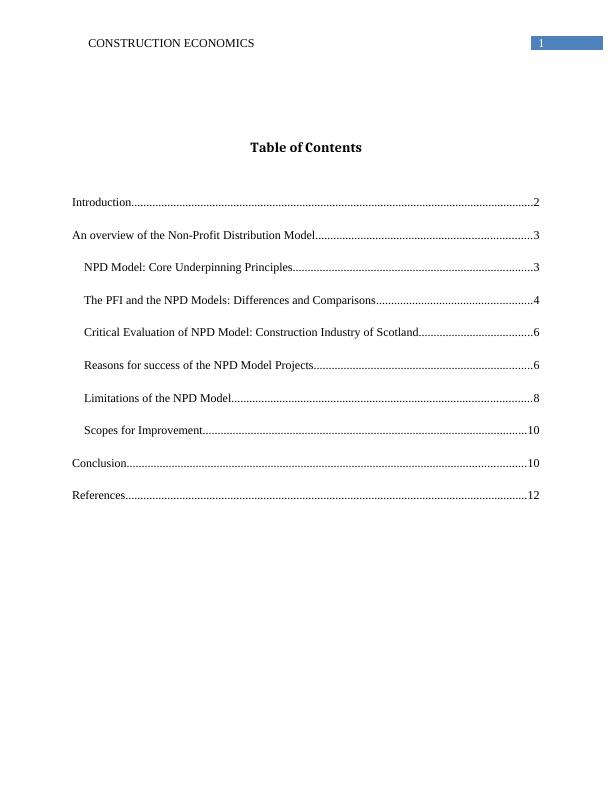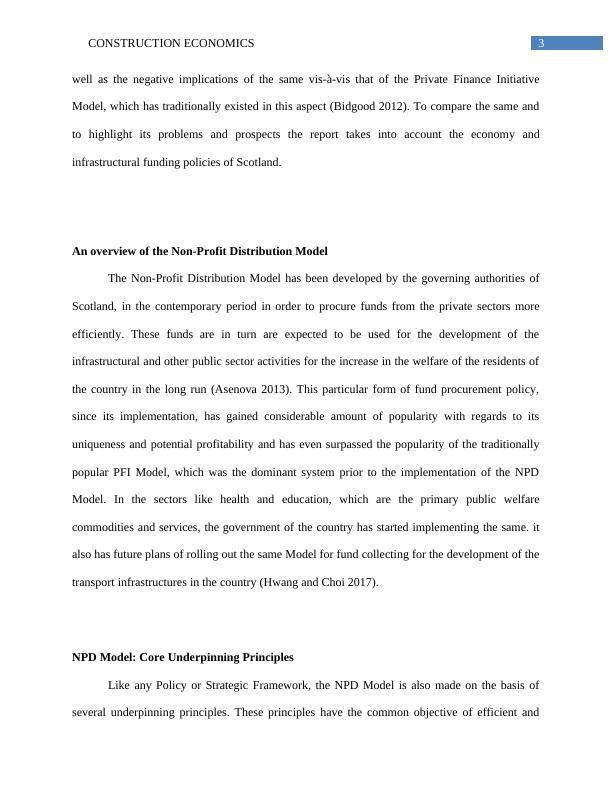Reasons for Success of the NPD Model Projects
Added on 2020-04-13
15 Pages3525 Words103 Views
0CONSTRUCTION ECONOMICS Construction EconomicsName of the StudentName of the UniversityAuthor Note

1CONSTRUCTION ECONOMICS Table of ContentsIntroduction......................................................................................................................................2An overview of the Non-Profit Distribution Model........................................................................3NPD Model: Core Underpinning Principles................................................................................3The PFI and the NPD Models: Differences and Comparisons....................................................4Critical Evaluation of NPD Model: Construction Industry of Scotland......................................6Reasons for success of the NPD Model Projects.........................................................................6Limitations of the NPD Model....................................................................................................8Scopes for Improvement............................................................................................................10Conclusion.....................................................................................................................................10References......................................................................................................................................12

2CONSTRUCTION ECONOMICS Introduction In any country, the government or the regulatory authorities have the responsibility tomaintain a high welfare for the residents of the country as a whole and to increase the economicgrowth as well as development of the same with time. To facilitate the increase in the overallwelfare of the residents of a country, it is important for the government to assure that there areproper infrastructural framework in the country, which in turn helps in facilitating the overalldevelopment of the country in the long run. These infrastructural aspects involve the efficientproduction and dissemination of health and education services, transports, monetary welfare andemployment generational activities. Most of these aspects fall under the domain of public goodand are thus non-rival and non-excludable in nature (Auerbach et al. 2013). However, to build adequate and efficient infrastructure in a country, huge amount ofcapital resources are required, which are not always possible for the government to gather alone.In these cases, more specifically in the contemporary periods, with economic development beingone of the primary issues of concern, the government often collaborated with the privateinvestors for this purpose (Bodie, Kane and Marcus 2014). There exist different forms of privatepublic co-operations, negotiations and partnerships in the economy, which are used by thegoverning authority of the country for facilitating fund allocation and investment. Of these themost widely used one is the Private Finance Initiative Model. Under this Model, forinfrastructural development, both the sectors enter into partnership for the purpose ofprocurement of funds (Iossa and Martimort 2015). Taking this into context, the report tries to analyze the Non-Profit Distribution Model offund procurement for public infrastructural developments and tries to compare the positive as

3CONSTRUCTION ECONOMICS well as the negative implications of the same vis-à-vis that of the Private Finance InitiativeModel, which has traditionally existed in this aspect (Bidgood 2012). To compare the same andto highlight its problems and prospects the report takes into account the economy andinfrastructural funding policies of Scotland. An overview of the Non-Profit Distribution Model The Non-Profit Distribution Model has been developed by the governing authorities ofScotland, in the contemporary period in order to procure funds from the private sectors moreefficiently. These funds are in turn are expected to be used for the development of theinfrastructural and other public sector activities for the increase in the welfare of the residents ofthe country in the long run (Asenova 2013). This particular form of fund procurement policy,since its implementation, has gained considerable amount of popularity with regards to itsuniqueness and potential profitability and has even surpassed the popularity of the traditionallypopular PFI Model, which was the dominant system prior to the implementation of the NPDModel. In the sectors like health and education, which are the primary public welfarecommodities and services, the government of the country has started implementing the same. italso has future plans of rolling out the same Model for fund collecting for the development of thetransport infrastructures in the country (Hwang and Choi 2017). NPD Model: Core Underpinning Principles Like any Policy or Strategic Framework, the NPD Model is also made on the basis ofseveral underpinning principles. These principles have the common objective of efficient and

End of preview
Want to access all the pages? Upload your documents or become a member.
Related Documents
Construction Economics Assignmentlg...
|15
|3662
|246
Construction Economics and Procurement Assignmentlg...
|11
|2826
|60
Construction Economics and Procurement in Scotlandlg...
|11
|2702
|84
Procurement & Contractslg...
|6
|811
|176
Contracts and Procurement Management Assignmentlg...
|13
|4017
|57
Public Private Partnership in Australian and Global Construction/Infrastructure Projectslg...
|19
|5440
|488
